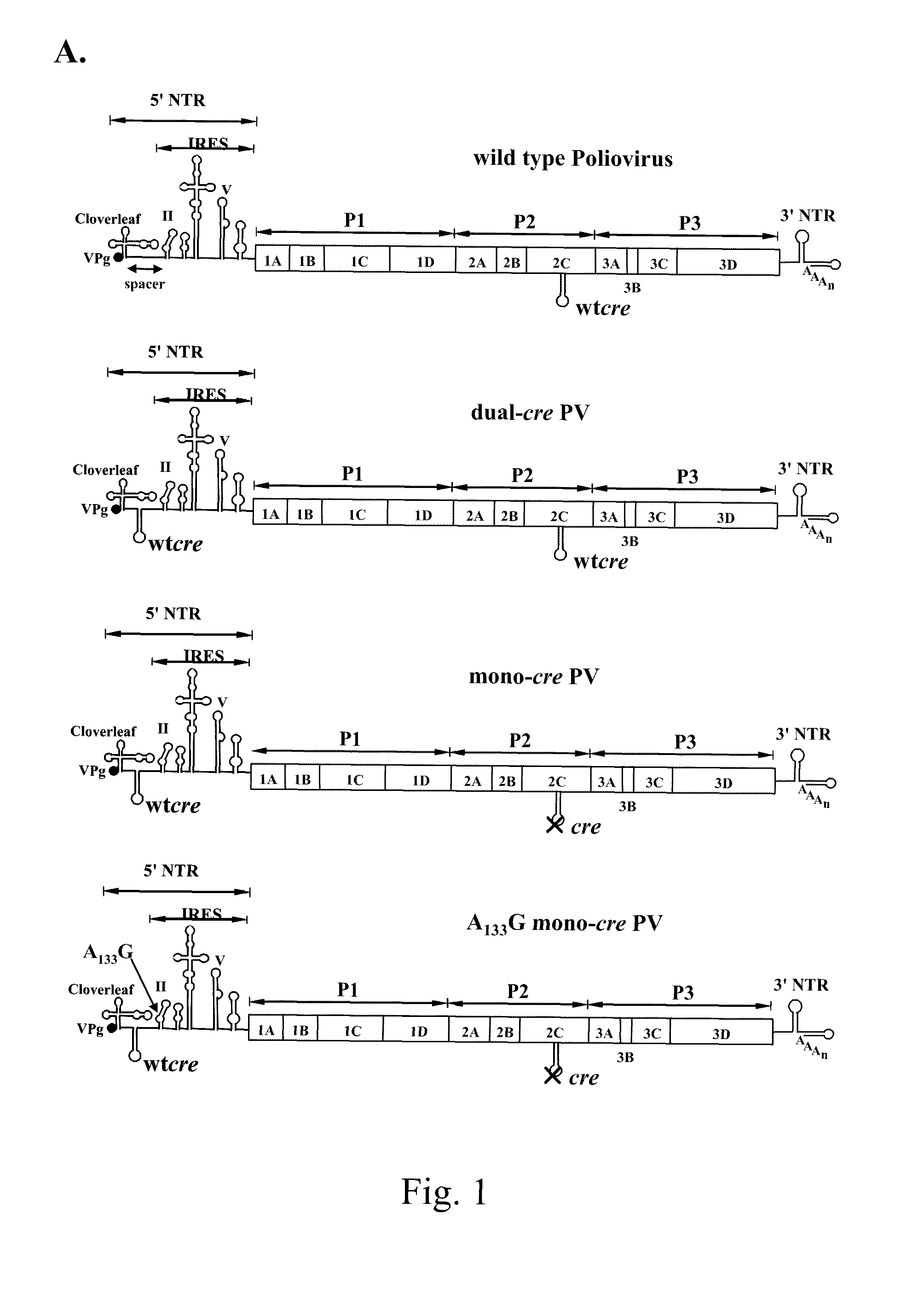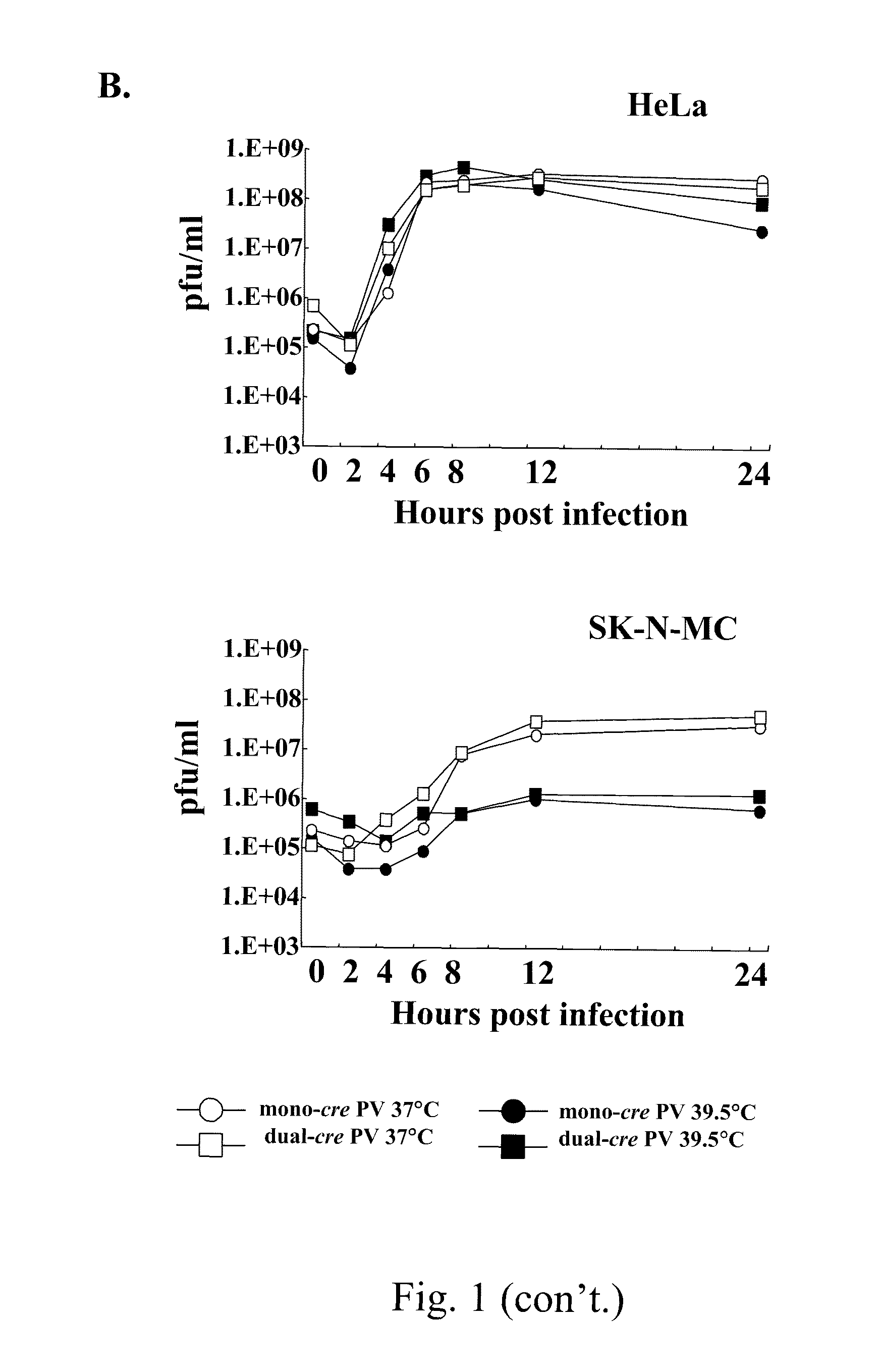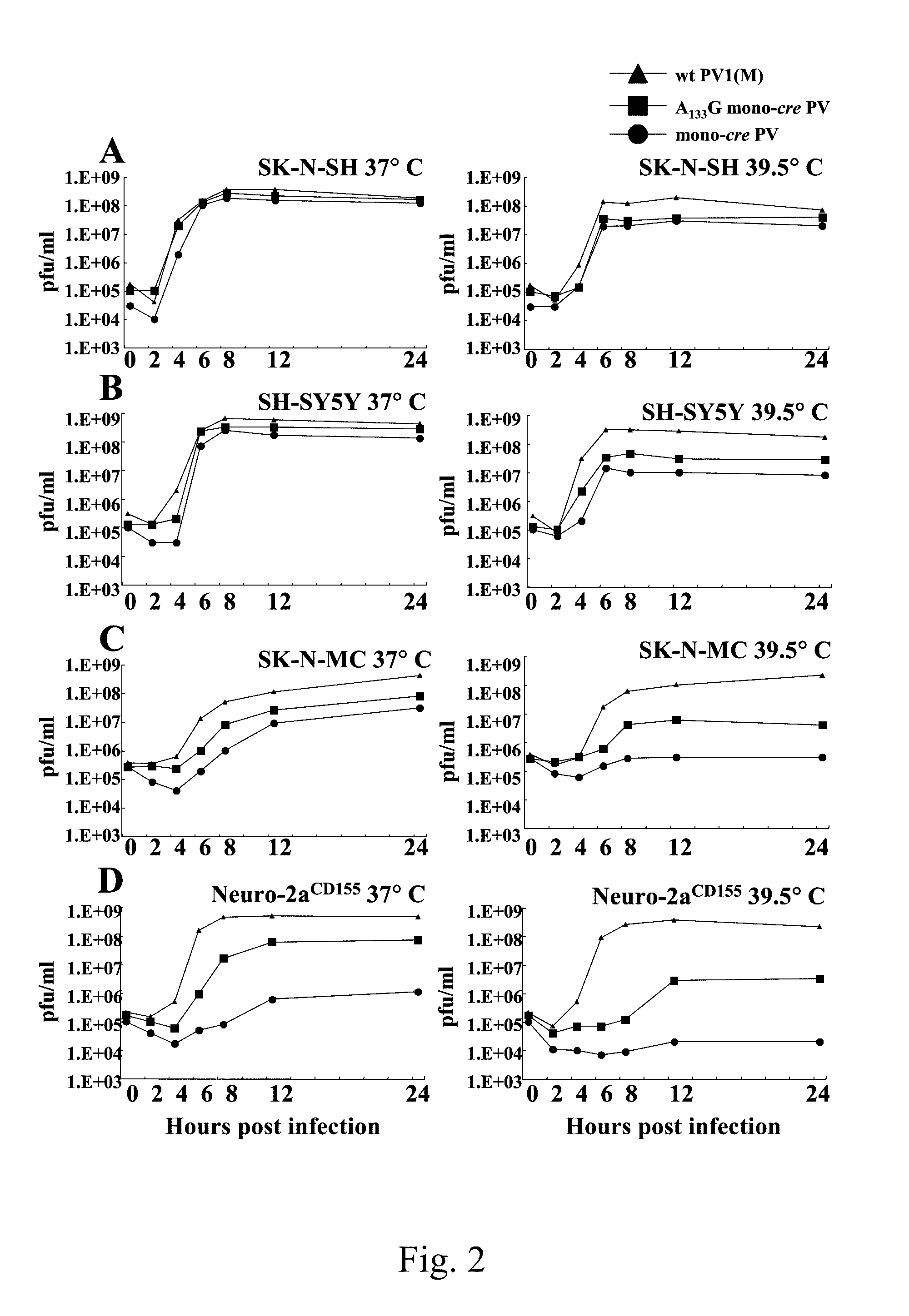Attenuated poliovirus
a poliovirus and antiviral technology, applied in the field of new drugs, can solve the problems of limited treatment utility for high-risk neuroblastoma, frequent disease relapse, poor prognosis, etc., and achieve the effect of improving replication properties
- Summary
- Abstract
- Description
- Claims
- Application Information
AI Technical Summary
Benefits of technology
Problems solved by technology
Method used
Image
Examples
example 1
Construction of Plasmids and DNA Manipulation
[0062]The neurovirulent poliovirus type 1 (Mahoney) was the strain used in the laboratory (Cello, 2002). The mouse neuroblastoma cell line stably expressing CD155α (Neuro-2aCD55) has been described (Mueller, 2003). Neuro-2aCD155 cells, which are susceptible to poliovirus infection, were maintained in Dulbecco's modified Eagle's medium containing 1% penicillin / streptomycin and 10% fetal bovine serum. HeLa cells and human neuroblastoma cell lines SK-N-MC, SK-N-SH and SH-SY5Y were obtained from the American Type Culture Collection (Manassas, Va.) and were maintained according to the manufacture's specification.
[0063]The poliovirus cDNA sequence was that used by Cello et al. (2002) for cDNA synthesis (plasmid pT7PVM) (van der Werf, 1986). “pT7PVM cre(2CATPase) mutant” is a full-length poliovirus cDNA clone in which the native cre element in the 2CATPase coding region was inactivated by introducing three mutations at nt 4462 (G to A), 4465 (C ...
example 2
In vitro Transcription, Transfection and One-step Growth Curves
[0065]All plasmids were linearized with DraI. RNAs were synthesized with phage T7 RNA polymerase, and the RNA transcripts were transfected into HeLa cell monolayers by the DEAE-dextran method as described previously (van der Werf, 1986). The incubation time was up to 2 days and virus titers were determined by a plaque assay (Pincus, 1986). One-step growth curves in HeLa, Neuro-2aCD155, SK-N-MC, SK-N-SH and SH-SY5Y were carried out as follows. Cell monolayers (1×106 cells) were infected at a multiplicity of infection (MOI) of 10. The plates were incubated at 37° C. or at 39.5° C., as indicated, and the cells were harvested at 0, 2, 4, 6, 8, 12 and 24 h post infection. The plates were subjected to three consecutive freeze-thaw cycles, and the viral titers of the supernatants were determined by plaque assay on HeLa cell monolayers, as describe before (Pincus, 1986).
[0066]Results are shown in FIG. 1B. The insertion of the du...
example 3
Neurovirulence Assays
[0067]Groups of four CD155 tg mice or CD155 tgA / J mice (equal number of male and females) were inoculated with any given amount of virus ranging from 101 to 107 plaque-forming unit (pfu) (30 μl / mouse) intracerebrally or intramuscularly with mono-crePV, A133Gmono-crePV, dual-crePV and wt PV1(M). Mice were examined daily for 21 days post-inoculation for paralysis and / or death. The virus titer that induced paralysis or death in 50% of the mice (PLD50) was calculated by the method of Reed and Muench (Reed, 1938).
PUM
| Property | Measurement | Unit |
|---|---|---|
| volume | aaaaa | aaaaa |
| volumes | aaaaa | aaaaa |
| volumes | aaaaa | aaaaa |
Abstract
Description
Claims
Application Information
 Login to View More
Login to View More - R&D
- Intellectual Property
- Life Sciences
- Materials
- Tech Scout
- Unparalleled Data Quality
- Higher Quality Content
- 60% Fewer Hallucinations
Browse by: Latest US Patents, China's latest patents, Technical Efficacy Thesaurus, Application Domain, Technology Topic, Popular Technical Reports.
© 2025 PatSnap. All rights reserved.Legal|Privacy policy|Modern Slavery Act Transparency Statement|Sitemap|About US| Contact US: help@patsnap.com



